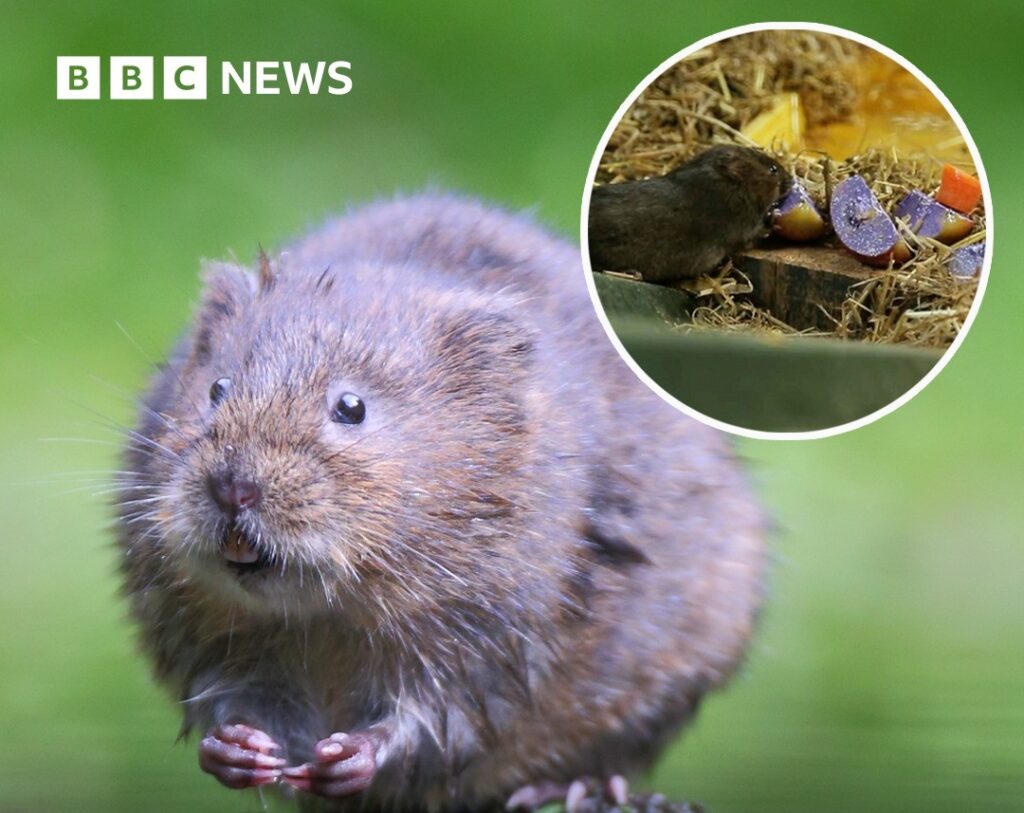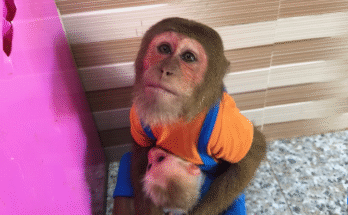
The endangered tiny mammal’s future is hanging in the balance, so conservationists have been looking for new ways to track them.
The Initiative for Nature Conservation Cymru (INCC) hopes that by offering the animals some edible glitter to eat, the sparkle should come out the other end – providing some much-needed answers.
Rob Parry, from the INCC, said his team had consulted with vets to ensure the edible and biodegradable glitter would not be harmful to the water voles.
“It’s something that we’ve done in nature conservation before for other species, for badgers in particular where we use pellets to put in with peanuts, which badgers love,” said Mr Parry.
“So, we’ve taken that idea and scaled it down to water vole size, which means using glitter.”
Tap the link in the @BBCNews’s bio to read how glitter could be used to track different families of the water vole.
(📷 PA Media)
It sounds like a whimsical idea straight out of a fairy tale—using glitter to save an endangered species. Yet, in the valleys and riversides of Wales, this unlikely tool is becoming a serious part of conservation science aimed at protecting one of the UK’s most threatened mammals: the water vole.
Water voles, often described as the “British beaver” or the inspiration for Ratty in The Wind in the Willows, have seen their populations decline by more than 90% in recent decades. Once a common sight along riverbanks, canals, and wetlands, these small, furry creatures with blunt noses and short ears are now rare and elusive. Habitat loss, pollution, and, most devastatingly, predation by the invasive American mink have pushed the water vole to the brink.
Enter glitter—not the kind used in crafts and parties, but a specially designed, biodegradable version that can be safely used in wildlife monitoring. Researchers and conservationists in Wales are turning to this innovative approach as part of a broader effort to track, understand, and ultimately protect the remaining water vole populations.
The Science Behind the Sparkle
So how exactly does glitter come into play? The technique involves mixing environmentally safe, colored glitter with bait or food pellets given to water voles. Once consumed, the glitter passes harmlessly through the animal’s digestive system and shows up in their droppings. These sparkly signs act like glowing breadcrumbs, helping conservationists confirm the presence of voles in a particular area without the need for traps or cameras.
This method, though unusual, has proven effective in monitoring elusive species. Traditional surveying can be time-consuming and expensive, requiring trained professionals to sift through dense vegetation and muddy riverbanks for inconspicuous signs like nibbled plants or latrines. Glitter-laced droppings, on the other hand, are far easier to spot—and provide a clear, non-invasive way to track animal movement and behavior.
In Wales, this approach is being tested by wildlife organizations such as the Vincent Wildlife Trust and Natural Resources Wales, in collaboration with local communities and landowners. The goal is to map remaining populations of water voles and assess the success of reintroduction programs. By understanding where the voles are thriving—or struggling—scientists can make better decisions about habitat restoration, mink control, and land use policy.
A Race Against Time
The urgency is real. Water voles are a keystone species, meaning their presence reflects the overall health of freshwater ecosystems. Their burrows aerate riverbanks, and their diet helps maintain plant diversity. When water voles disappear, it’s often a sign that something is seriously wrong with the environment.
Wales, with its network of rivers, wetlands, and rural landscapes, once provided ideal conditions for water voles. But over the past century, agricultural intensification, urban expansion, and river modifications have taken a toll. The introduction of the American mink, which escaped from fur farms and has few natural predators in the UK, has been especially devastating. Unlike native predators, minks can enter vole burrows and decimate entire colonies in weeks.
Conservationists are now fighting back with a combination of habitat improvements, mink trapping, and reintroductions of captive-bred water voles. Glitter-based monitoring is a small but powerful part of this toolbox. By confirming whether reintroduced voles are surviving and spreading, conservation teams can adjust their strategies in real time.

Engaging the Public
Another surprising benefit of glitter-based monitoring is its appeal to the public. The idea of “poop that sparkles” has captured imaginations and made conservation more relatable. Schools and local groups have even taken part in citizen science projects to help track glitter-marked droppings along riverbanks.
This kind of community engagement is vital. Protecting the water vole isn’t just about science—it’s also about people. Landowners must be willing to support habitat-friendly practices. Local councils need data to make informed planning decisions. And the general public must feel invested in the fate of this quiet, hidden mammal.
In this sense, glitter acts as a bridge between hard science and public storytelling. It brings attention to a species that might otherwise go unnoticed and sparks curiosity about the intricate connections between wildlife, water, and human activity.
The Bigger Picture
While glitter alone won’t save the water vole, it represents the kind of creative, interdisciplinary thinking that conservation increasingly requires. Faced with complex environmental challenges, scientists are blending technology, ecology, and even a bit of sparkle to make a difference.
Wales is well-positioned to be a leader in this effort. With its rich biodiversity and strong environmental ethos, the country is already home to several innovative wildlife projects. Saving the water vole could be a flagship success—showing that even small actions, like tracking glitter in droppings, can have a big impact when part of a larger, thoughtful strategy.
As climate change and habitat fragmentation continue to threaten wildlife across the UK, the story of the glittering water vole offers a glimmer of hope. It reminds us that conservation doesn’t always require grand gestures. Sometimes, it just takes a handful of sparkle and a lot of dedication.
It might sound strange, but glitter could play a key role in saving one of Wales’s most endangered mammals—the water vole. These once-common riverbank dwellers have seen their numbers drop by over 90% due to habitat loss, pollution, and predation by invasive American mink.
To track water voles without disturbing them, conservationists in Wales are using an innovative technique: glitter tracking. Special biodegradable, non-toxic glitter is mixed into food and fed to the voles. When the animals defecate, researchers can find and identify glitter-filled droppings in the wild. This helps them understand how voles move across habitats and whether reintroduction efforts are working.
This method is low-cost, non-invasive, and surprisingly effective. It’s being used alongside habitat restoration and predator control to help rebuild water vole populations across Welsh wetlands.
Beyond its practical benefits, glitter tracking also captures public imagination. It’s a quirky yet powerful example of how creative science can help save wildlife. While glitter alone won’t save the water vole, it’s become a shining tool in a much larger conservation effort—one that combines ecological care, innovation, and a little bit of sparkle.



